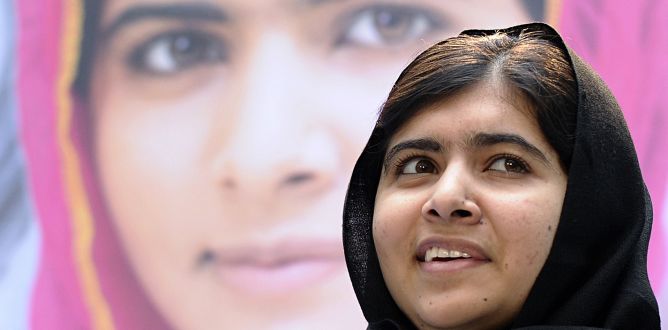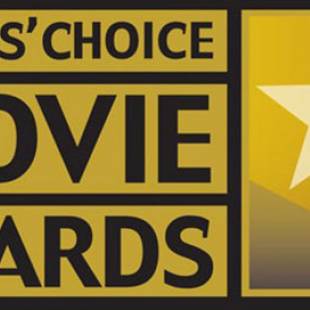He Named Me Malala Parent Guide
The filmmakers should receive praise for doing their best to tell the tragic details of Malala’s life without being overly gratuitous.
Parent Movie Review
Malala Yousafzai captured the world’s attention when, in 2012, she and two other schoolgirls were shot by Taliban henchmen while riding their school bus home. Miraculously all three girls survived, but have been left with physical and mental injuries. For Malala, the bullet that entered the left side of her head caused a large skull fracture, and cut off the muscle movement on that side of her face and destroyed her ability to hear in one ear.
Yet Malala’s story is not about her injuries—it’s about her spirit. Raised in the Swat Valley of Pakistan in a moderate Muslim family, Malala observed and kept the moral codes of her religion. But when the Taliban decided girls could no longer attend school, the edict went beyond what her conscience could bear. As a young teenager she began to publicly challenge the law and that’s what placed her squarely in the crosshairs of her attempted assassins.
In this documentary we learn that Malala’s father, Ziauddin was also a bit of a rebel. A teacher by profession, he always encouraged his three children (two of which are boys) to get an education. He supported and encouraged his daughter’s determined opposition, even though it placed the family at risk. After the malicious incident, the Yousafzai’s were relocated to England (thanks to the sympathizes of the international community) where the fifteen-year-old could access better medical care, and where they could all live within a more peaceful society. While the benefits of a new life don’t always outweigh the longing for home, Malala is well aware that any attempt to return to Pakistan would likely result in another attempt on her life.
Perhaps the most endearing aspect of this story is the subject’s sincere desire to put her cause ahead of the celebrity attention she is receiving. Although her father is by her side, Malala is no puppet child. Certainly Dad has engendered social responsibility in this family, yet his daughter claims personal responsibility for her advocacy activities. This living martyr is also modest and selfless, traits that are tested when director Davis Guggenheim asks what her favorite book is on her expansive bookcase. She points to a couple, including Stephen Hawking’s A Brief History of Time. Then Guggenheim superfluously suggests she pull out another located a few tomes over—her own copy of I Am Malala, the best-selling biography of her efforts. Hesitantly she plays along with the request, but is obviously uncomfortable with the undesired attention.
And public notice she certainly gets. The media have already fallen in love with this motivated young woman and Guggenheim is obviously just as enamored. Consequently he focuses almost entirely on Malala as a figure of inspiration and success, rather than exploring in any depth other aspects of her life, like the undoubtedly difficult cultural transition her family has had to face or how they feel about being in thrust in the spotlight.
Still, the filmmakers should receive praise for doing their best to tell the tragic details of Malala’s life without being overly gratuitous. Re-enactments of the terrorist attack where she was injured are shot with obscured camera images and imply the violence (with some blood effects) rather than showing it. Many parts of her past experiences, along with the accompanying fears, are portrayed in colorful, simplistic animation. The most shocking content is the inclusion of real news footage. Photographs of the empty bloodstained bus in which the girls were shot are seen, as well as a short clip featuring the body of a person executed in the town square that is wrapped in a blood-soaked cloth.
Despite theses sensitive depictions, this documentary may still be too much for young children. However teens and adults will be offered a wealth of valuable discussion points, such as the benefit of being able to attend school and the rights of all children to receive an education. Malala especially embodies the challenges endured by girls—and her courageous actions are a great example of how one person can stand up to effect positive change.
Directed by Davis Guggenheim. Starring Malala Yousafzai, Ziauddin Yousafzai, Mobin Khan. Running time: 88 minutes. Theatrical release October 2, 2015. Updated July 17, 2017
He Named Me Malala
Rating & Content Info
Why is He Named Me Malala rated PG-13? He Named Me Malala is rated PG-13 by the MPAA for thematic elements involving disturbing images and threats
Violence: Death threats, executions and murders are frequently discussed. People live in fear of being killed. Victims of violence recount their stories of being shot (with little graphic detail). Re-enactments of men gunning down students on a school bus, and a wounded girl being transported to medical care are purposely shot to obscure most details, although some blood is seen. Animation is used to depict some portions of this story, including a battle between warring soldiers where weapons are seen, and death and killing implied. Historical news footage is used and shows depictions of blood where shootings have occurred, a bloodied corpse, surgical procedures and bombed out buildings. Scars from life-threatening injuries are shown and the damage of a bullet wound to the brain is discussed. Slapping children as a punishment is mentioned. The documentary also shows other girls, children and refugees who are suffering because of poverty, war and terrorist acts. A father feels guilt over allowing his child to be hurt.
Sexual Content: A teen girl looks at pictures of handsome celebrities on her laptop.Modesty and the covering of one’s head and face are mentioned.
Language: Siblings exchange some name-calling.
Alcohol / Drug Use: None noted.
Page last updated July 17, 2017
He Named Me Malala Parents' Guide
Learn more about the accomplishments of Malala Yousafzai.
Malala explains why her father gave her this name. Why is it significant that the hero of the story is a girl? How has Malala’s life modeled that of her namesake? What does the proverb mean: “It is better to live like a lion for one day than to live like a slave for 100 years?”
Why does Malala’s 300-year-old family tree include only the names of the male ancestors? How does her father feel about that?
Malala says her story isn’t important because it is unique –it is important because it isn’t unique. What other females have endured similar atrocities? Why are girls sometimes the target of greater abuse than boys? How do you feel about this gender prejudice?
Malala claims she is not angry about the tragic events that have happened in her life. Do you believe her? How does she deal with the physical and emotional scars she has incurred? How do you think would you respond if you were in similar circumstances? Who (or what) does her father feel is her real assassin?
How did the Taliban use media to distribute their message? How effective was this approach. What groups of people were the most influenced by their propaganda? Why? Why did no one try to stop them when they first began broadcasting? What events finally cause the government to oppose them? How unbiased is the media where you live? What ideologies are given voice in your society? Are there others that are silenced? What are the dangers of hearing only one side of a story?
What effect does destroying schools have on a population? How important is education in helping communities and countries to grow? Why do you think the Taliban wants to limit the learning opportunities of girls? Are boys’ opportunities also suffering because of the effects of war and unrest?
Home Video
The most recent home video release of He Named Me Malala movie is December 15, 2015. Here are some details…
He Named Me Malala releases to DVD on December 15, 2015.
Related home video titles:
Davis Guggenheim also directed Waiting for Superman a documentary about schools in America, and won an Academy Award for An Inconvenient Truth, which explored Global Warming.


